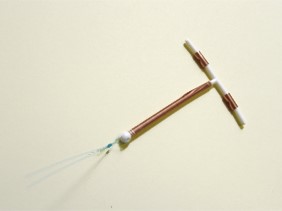IUD and IUS
An intrauterine device (IUD) is a small T-shaped plastic and copper device that's inserted into your womb by a specially trained health professional. There are various types and sizes available. Depending on the type, an IUD can last from three to ten years. It used to be called a coil.
An intrauterine system (IUS) is a small, T-shaped plastic device that contains a progestogen hormone. It's inserted into your womb by a specially trained health professional. Once it's in place, it works for five years.

